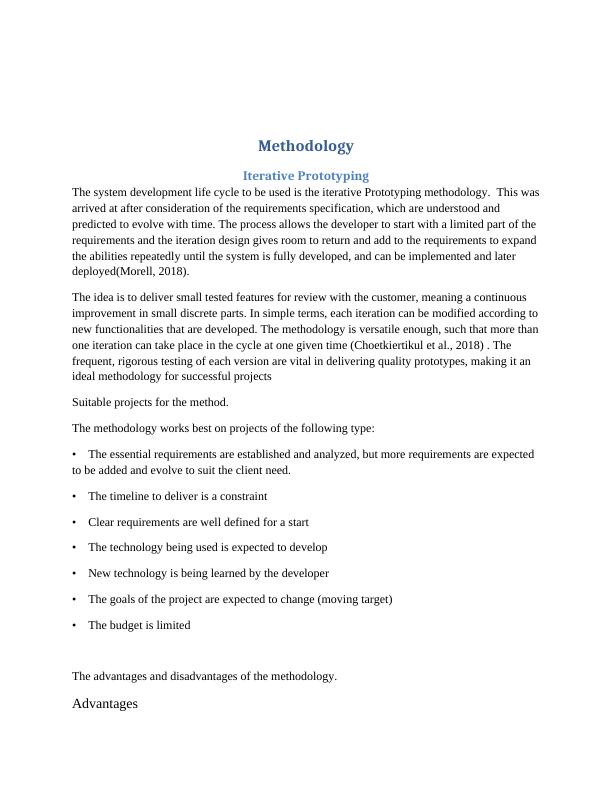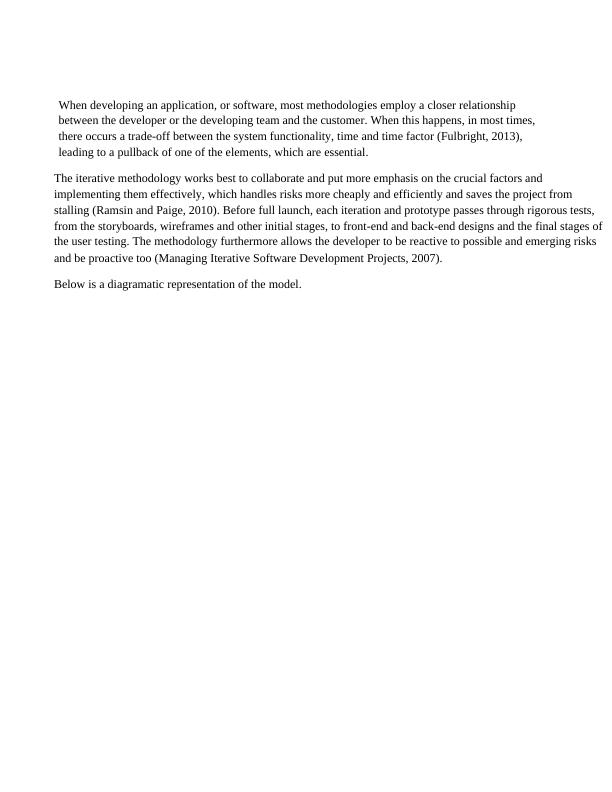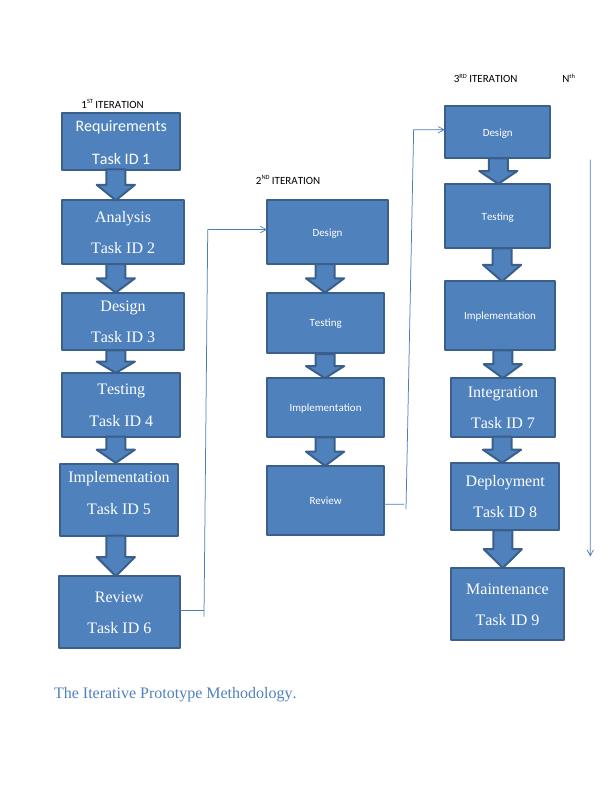Iterative Prototyping Methodology for Desklib
The assignment is about Autism Spectrum Disorder, its prevalence, impact, and understanding.
11 Pages1926 Words61 Views
Added on 2023-04-22
About This Document
Desklib uses the Iterative Prototyping methodology for system development. This methodology allows for the expansion of requirements and the delivery of small tested features for review with the customer. It is versatile, easy to measure progress, and produces functional prototypes. Suitable projects for this methodology include those with evolving requirements, a limited budget, and a constrained timeline. The advantages include early risk identification, easy testing, and reduced development time. The disadvantages include the need for professional project management and highly skilled staff for risk analysis.
Iterative Prototyping Methodology for Desklib
The assignment is about Autism Spectrum Disorder, its prevalence, impact, and understanding.
Added on 2023-04-22
ShareRelated Documents
End of preview
Want to access all the pages? Upload your documents or become a member.
Hospital Information System Analysis and Development
|16
|2912
|46
Software Development Lifecycle and its Importance
|17
|1624
|60
Software Requirements and Analysis Assignment 2022
|11
|1923
|37
Software Development Lifecycle Assignment
|6
|605
|54
Systems Analysis and Design
|11
|2605
|60
System Analysis for Desklib Online Library
|17
|2517
|56




